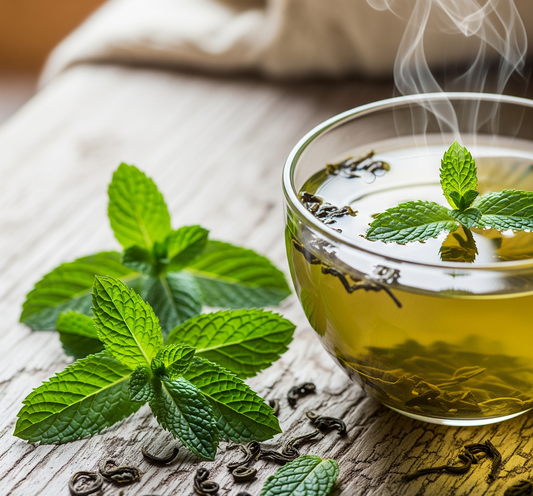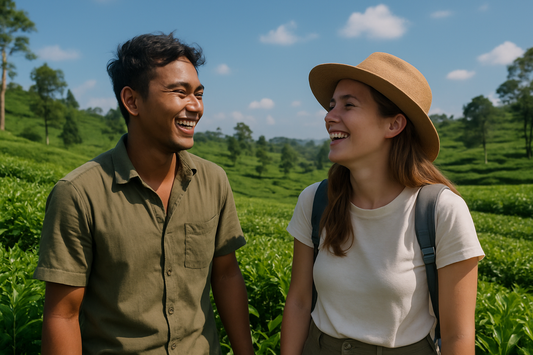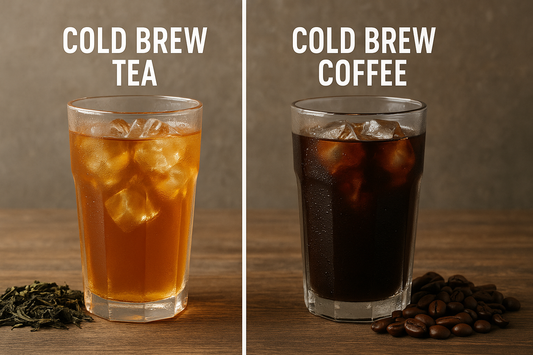Oolong tea, a versatile beverage between green and black tea, offers a wide range of flavors and health benefits. This article explores the different types of oolong tea, including Milk Oolong, Iron Goddess of Mercy, Phoenix Oolong, Big Red Robe, and Ali Shan Oolong. Discover the unique characteristics, brewing methods, and the numerous varieties available in the world of oolong tea.
Perhaps the least known of all teas, Oolong tea is a unique and versatile beverage that falls between green and black tea in terms of oxidation. With its rich history and diverse flavor profiles, oolong tea has slowly gained popularity worldwide.
This article will explore the different types of oolong tea, their flavors, health benefits, and brewing methods.
What is Oolong Tea?

Oolong tea, known as oōlióng(dé) in Chinese, translates to "black dragon tea." Its origins can be traced to as back as the Ming Dynasty. Like all other types of tea, oolong tea is made from the leaves of the Camellia sinensis plant, which undergoes a partial oxidation process.
This process typically lasts between one to two hours, resulting in a tea with green and black characteristics. The varying levels of oxidation and the specific processing techniques used by tea masters contribute to the wide range of flavors and aromas found in oolong tea.
Major Types of Oolong Tea
There are numerous types of oolong tea, each with its unique flavor profile and characteristics. Below are some of the most popular varieties:
- Milk Oolong (Jin Xuan)
Milk oolong, or Jin Xuan, is a lightly oxidized Taiwanese oolong known for its creamy texture and floral aroma. This tea has a smooth, subtle flavor that is reminiscent of green tea but with a delightful milky note. It is an excellent choice for those new to oolong tea, as it is approachable and easy to drink.
- Iron Goddess of Mercy (Tie Guan Yin)
Tie Guan Yin, or Iron Goddess of Mercy, is a famous Chinese oolong from the Anxi region. This tea can be processed to achieve either light or heavy oxidation, resulting in a complex flavor profile. Lightly oxidized Tie Guan Yin tends to be floral and sweet, while heavily oxidized varieties exhibit deeper, more robust flavors with a hint of roasted notes.
- Phoenix Oolong (Dan Cong)
Phoenix oolong, also known as Dan Cong, originates from the Phoenix Mountains in Guangdong, China. This variety is renowned for its unique fragrances, with each sub-variety offering distinct flavor notes. The tea leaves are often twisted and rolled, which enhances the aromatic qualities. Phoenix oolong can have flavors ranging from fruity to floral, making it a favorite among tea connoisseurs.
- Big Red Robe (Da Hong Pao)
Da Hong Pao, or Big Red Robe, is a prestigious oolong from the Wuyi Mountains in China. Known for its distinct orchid aroma and sweet aftertaste, this tea can also exhibit strong mineral flavors. Big Red Robe is often considered one of the finest oolong teas and is highly sought after for its rich taste and cultural significance.
- Ali Shan Oolong
Ali Shan oolong is grown in the high mountains of Taiwan, specifically on the slopes of Ali Shan. This tea is known for its mellow, floral, and creamy flavors. The high altitude and unique climate contribute to its delicate taste, making it a popular choice among tea lovers. Ali Shan oolong is often enjoyed for its refreshing qualities and smooth finish.
How Many Types of Oolong Tea Are There?
Besides the types mentioned, the world of oolong tea is vast, with hundreds of varieties available. While it is difficult to pinpoint an exact number, oolong tea can be categorized into two main types based on oxidation levels: lightly oxidized and heavily oxidized.

Within these categories, there are numerous regional varieties, each with its unique characteristics. The five types mentioned above are just a starting point, and exploring different oolong teas can lead to exciting discoveries. Types and varieties of Organic Oolong teas depend on region and processing. Some of the most famous types of Oolong tea include:
Chinese Oolong Teas
-
Ti Kuan Yin (Iron Goddess of Mercy): Floral aroma with sweet, creamy flavors; tightly rolled dark green leaves.
-
Da Hong Pao (Big Red Robe): Dark, roasted leaves with rich flavors, including chocolate and stone fruits.
-
Shui Xian (Narcissus): Less oxidized, floral, and sweet with a slight mineral quality.
Nepali Oolong Teas
- Shangri-La Oolong: Flavor notes of sweet spices and caramel, provide a relaxing experience rich in antioxidants from Camellia sinensis leaves, promoting rest.
- Spring Oolong: Flavor notes of sage, wildflowers, and sweet herbs, are a subtle brew made from black tea (Camellia sinensis) that promotes relaxation while offering antioxidant benefits.
Taiwanese Oolong Teas
-
Dong Ding Oolong: Semi-oxidized with a robust flavor, available in various roast levels.
-
Bai Hao Oolong (Oriental Beauty): Unique 'bug bite' processing leads to sweet and fruity notes.
What Does Oolong Tea Taste Like?

The taste of oolong tea can vary widely depending on its oxidation level and processing method. Lightly oxidized oolongs tend to have a crisp, grassy flavor with floral notes, while heavily oxidized varieties may offer richer, more robust flavors with toasty or nutty undertones. The complexity of oolong tea is often compared to fine wines, as both are influenced by factors such as the terroir, processing techniques, and the skill of the tea master.
Health Benefits of Oolong Tea
Oolong tea is not only delicious but also offers several health benefits. Some of the key advantages include:
- Rich in Antioxidants
Oolong tea contains catechins and other antioxidants that help combat oxidative stress in the body. These compounds may reduce the risk of chronic diseases and promote overall health.
- Weight Management
Studies suggest that oolong tea may aid in weight management by boosting metabolism and promoting fat oxidation. Regular consumption of oolong tea can be a helpful addition to a balanced diet and exercise routine.
- Mental Alertness
Oolong tea contains caffeine, which can enhance mental alertness and concentration. The moderate caffeine content makes it a suitable choice for those looking for a gentle energy boost without the jitters often associated with coffee.
- Skin Health
The antioxidants in oolong tea may also benefit skin health by reducing inflammation and protecting against damage from UV rays. Some studies suggest that oolong tea can help alleviate skin conditions such as eczema and acne.
Brewing Oolong Tea

Brewing oolong tea requires attention to detail to fully appreciate its flavors. Here are some general guidelines for brewing:
- Water Temperature: Oolong tea is best brewed with water heated to around 180-200°F (82-93°C). The exact temperature may vary based on the specific type of oolong you are using.
- Steeping Time: Steep oolong tea for 60 seconds to 3 minutes, depending on the oxidation level and personal preference. Lightly oxidized oolongs may require shorter steeping times, while darker varieties can be steeped longer.
- Multiple Infusions: Oolong tea leaves can be steeped multiple times, with each infusion revealing new layers of flavor. It is common to steep high-quality oolong tea 3 to 5 times.
- Enjoy Plain: To fully appreciate the unique flavors of oolong tea, it is best enjoyed plain, without additives like milk or sugar.
Conclusion
Oolong tea offers a delightful array of flavors, health benefits, and cultural significance. With its unique processing methods and diverse varieties, there is a type of oolong tea for everyone to enjoy. Whether you are a seasoned tea drinker or just starting your journey, exploring the different types of oolong tea can be a rewarding experience. So, brew a cup, savor the flavors, and enjoy the many benefits this remarkable tea has to offer!



